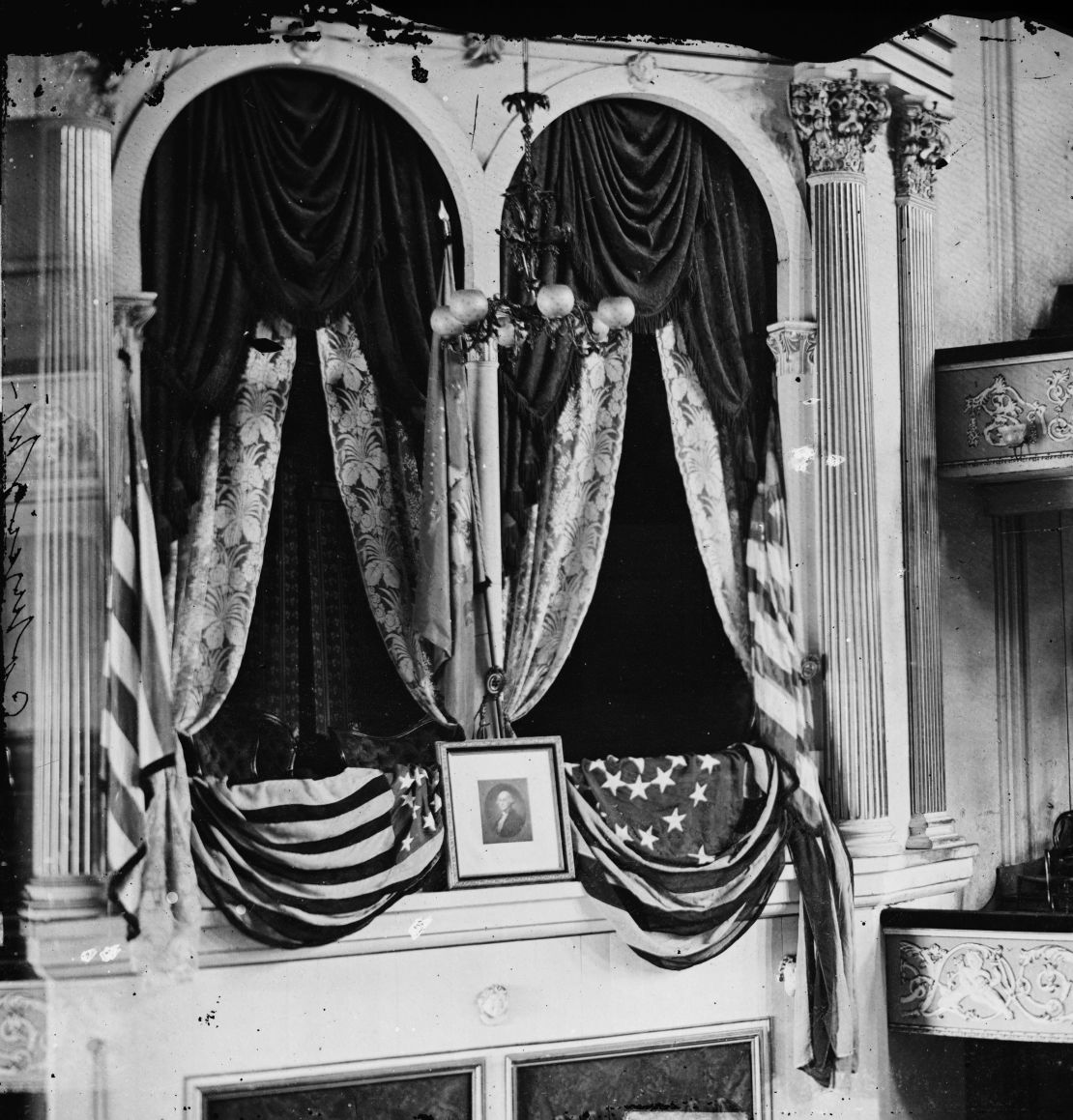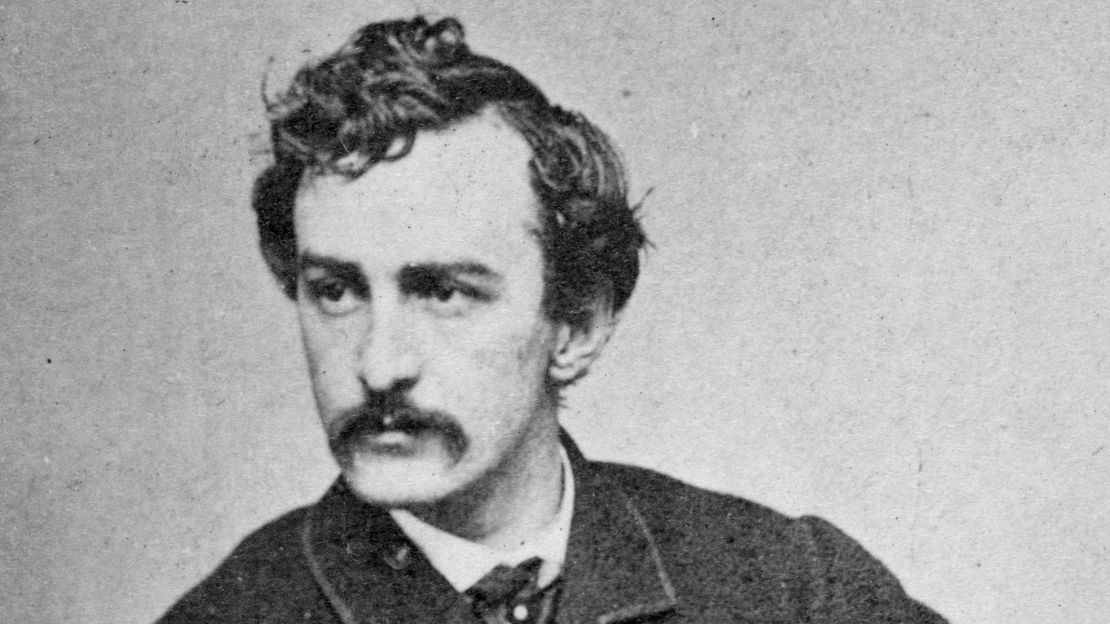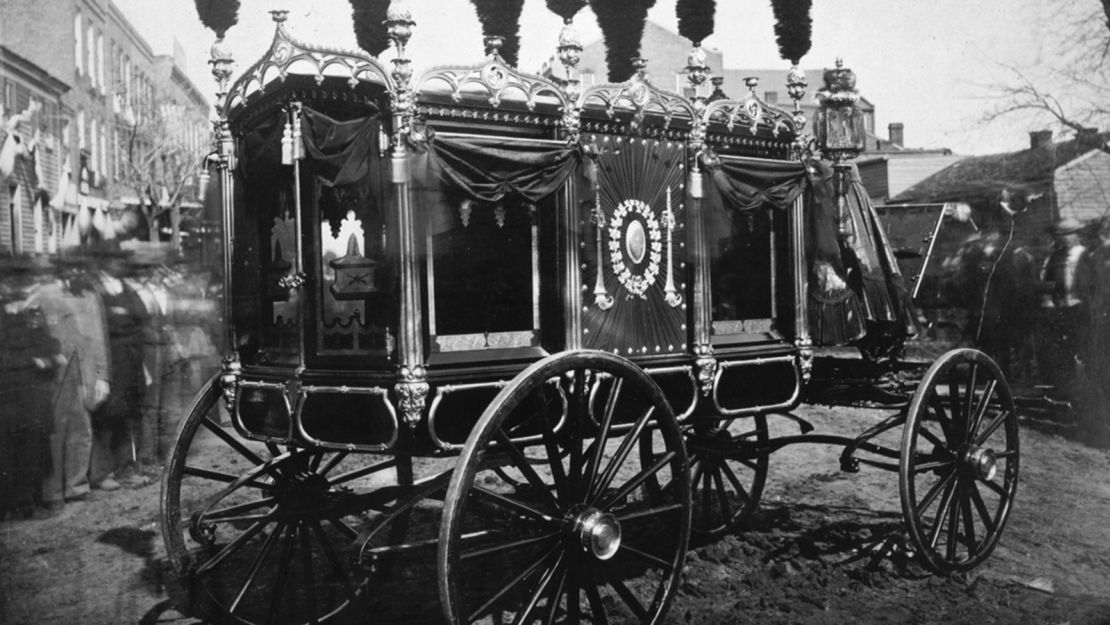Story highlights
Events and exhibits will to mark the 150th anniversary of Lincoln's assassination
Organizers want people to learn about more than the details of his death
Sites, events in Maryland tell of the massive manhunt for assassin John Wilkes Booth
Abraham Lincoln had been in good cheer on the evening of Good Friday, April 14, 1865, as he watched the stage comedy “Our American Cousin.”
During Act III at Ford’s Theatre, the laughter turned to horror after renowned actor John Wilkes Booth entered the presidential box with his derringer pistol and put a bullet into Lincoln’s brain. In a single instant, American history was changed forever.
Lincoln died the following morning.
Some 150 years later, Americans can explore the legacies of Lincoln and his tragic death in three acts: Exhibitions and events will focus on the assassination, the manhunt in Maryland and Virginia for Booth and his co-conspirators, and the nation’s protracted mourning.
The most famous of Lincoln locations, Washington’s Ford’s Theatre, is hosting a special exhibition, “Silent Witnesses: Artifacts of the Lincoln Assassination,” through May 29. It features wife Mary Todd Lincoln’s cloak, Lincoln’s familiar top hat, the murder weapon and the bloodied cuff of an actress who cradled the head of the dying president, among other personal items. It’s the first time since 1865 that all the items have been brought together at the historic theater.
“Those are the humanizing things. That’s what makes history real with people,” said Tracey Avant, curator of the exhibit.
Avant and other organizers know that Americans still feel the shared loss from seven score and 10 years ago. It is natural to ask, “What if Lincoln had lived?”
But they hope for something more for the man whose eloquent words continue to inspire. They want you to be empowered by his leadership, his work for equality and a unified country after the Civil War. They want you to be moved by his connection to ordinary people.
Here are some fascinating Lincoln spots and events to inspire you.

Death of the President
Visitors to Ford’s Theatre will take a journey back in time during an around-the-clock event on April 14-15. About 200 costumed interpreters will give first-hand accounts about the end of the war and re-create the vigil near the residence where the mortally wounded Lincoln was taken. The National Park Service will lay a wreath at the Petersen House on the morning of April 15, 150 years to the day after Lincoln passed away and Secretary of War Edwin Stanton said, “Now, he belongs to the ages.” The event will conclude with the tolling of bells across Washington.
A commemorative event on the evening of April 14 is sold out but will be streamed online.
“One thing we have tried to do, working with the National Park Service, is to make the (entire) site more than just about people hopping off a bus, looking at the (Booth) gun and seeing where Lincoln was shot,” Avant said.
The theater’s Center for Education and Leadership explores the President’s legacy and his key leadership principles. Young visitors learn about constitutional amendments, including the 13th Amendment, which formally abolished slavery.
Over at the Capitol, the catafalque, or platform, built to support his casket while the president lay in state in the Rotunda is on permanent display in the Exhibition Hall of the visitor center. Near it is a table used for Lincoln’s second inauguration just weeks before his murder. The Newseum, on Pennsylvania Avenue, through January 10 will display seven editions of The New York Herald from the day Lincoln died.
New York’s Morgan Library & Museum’s exhibition, “Lincoln Speaks: Words That Transformed a Nation” (through June 7), focuses on his mastery of the language and how those words shaped the nation. Among the letters are one the President wrote to the daughter of a fallen soldier and another from 1836, when Lincoln slyly discourages a suitor from marriage by telling her how dull and hard her life would be in Springfield, Illinois. “I am afraid you would not be satisfied.”
The collection includes a Frederick Douglass tribute to Lincoln and a handwritten and signed copy of Walt Whitman’s poem about the loss of Lincoln, “O Captain! My Captain!” (It was revived in the 1989 film “Dead Poets Society.”)

On the trail of John Wilkes Booth
Booth, a staunch supporter of slavery and the Confederacy, thought he would be considered a hero for killing a man he despised and considered a tyrant. Instead, a $100,000 reward was posted and a dogged pursuit was quickly launched, ending in the actor’s death April 26, 1865, at a farm in Virginia.
Civil War Trails’ online guide to touring the Booth escape route is among its most popular and includes numerous spots in Maryland and Virginia. (Officials discourage stopping at the farm where Booth died because of heavy traffic.)
Booth had help with his plot. Among those executed months afterward was Mary Surratt, convicted of conspiracy. She became the first woman to be executed by the U.S. government. To this day, historians debate her complicity.
Surratt and her family owned a tavern and hotel in Clinton, Maryland. Booth and one of his henchmen, riding at breakneck speed out of the capital, stopped by the tavern and picked up a rifle and supplies before riding south. The Surratt House Museum is open for tours and offers escape route tours in the spring and September. Visitors can see floor joists where weapons were hidden.
“It is a defining moment in American history,” Surratt director Laurie Verge says of Lincoln’s death. “To me, it changes the course of how the nation would be reunified and rejoined.
“On March 4 (at his second inauguration), Lincoln is telling the country about malice toward none and charity for all. Forty-two days later he is dead from an assassin’s bullet, and Reconstruction becomes a very bitter chapter. The repercussions continue to this day: the ongoing struggle for civil rights and race relations.”
Booth, heading toward the Potomac River, stopped by the home of Southern sympathizer Dr. Samuel Mudd, who set the leg Booth broke when he leaped from the President’s box at Ford’s Theatre. The role of Mudd remains controversial to this day; he was imprisoned for several years.
Charles County, Maryland, is marking “On the Trail of the Assassin” from April 17 to April 19 – featuring a play, music, tours and living history – with the key event at the Dr. Mudd House Museum near Waldorf. Programs are planned at other sites that Booth and David Herold passed while on the run, including Rich Hill Farm (PDF) in Bel Alton.
“He stayed nearby in a pine thicket,” said Tim Morgan, chief of tourism for Charles County. “They were helped by the Confederate underground. He learned here that his act was almost universally condemned.”

Going home: Funeral procession to Springfield
While people mourned Lincoln, the North’s grief also was cathartic. The Civil War, drawing to a close, had claimed nearly 750,000 lives. Millions of Americans watched the Lincoln funeral train travel from Washington to Springfield, Illinois, or filed past his remains during 13 stops in seven states, including Baltimore.
Baltimore’s B&O Railroad Museum will have re-enactments of the funeral cortege, a reproduction casket and funeral music during a commemorative event April 18-19. The museum, which has several Civil War-era locomotives and rail cars, has exhibits that will continue past the weekend.
The Fenimore Art Museum in Cooperstown, New York, has handwritten notes from two physicians who attended the Lincoln autopsy. The exhibit (through December 31) includes a more human element: a diary from an unidentified girl, probably between the ages of 10 and 12, who traveled to see the funeral train at a stop in Albany, New York.
“I think I can never forget that sein,” the girl wrote in her diary. “We went to the (train) cars & saw them bare him away towards his long resting place. Oh it is a sollom thing …”
Then and now: Sites from Lincoln's assassination
The final sesquicentennial events are in Springfield, Illinois, where the Lincolns lived before his presidency. Officials are re-creating Lincoln’s final journey through the streets and past his home, ending at Oak Ridge Cemetery.
Abraham Lincoln Presidential Library and Museum offers a collection of funeral and murder artifacts in its “A Fiendish Assassination” exhibit (until mid-July). Among the items are two medallions that adorned his hearse and a swan feather sent by Britain’s Queen Victoria. Another exhibit, “Undying Words: Lincoln 1858-1865” (through February), features centerpiece speeches and the bed on which Lincoln died at the Petersen House in Washington.
The Lincoln Home National Historic Site, also in Springfield, is where the family lived from 1844 until he took office in 1861. “While he lived in Springfield, he formed a lot of his ideas of freedom, equality and opportunity,” said Laura Gundrum, chief of interpretation. “The family was like all of us. They had the same hopes, dreams, the same struggles. “
As it did in May 1865, the house will have black mourning fabric on its exterior during the 150th anniversary observances.
Veterans have helped make a replica of the president’s ornate hearse for the 2015 Lincoln Funeral Coalition’s re-creation of the procession through the streets of Springfield on May 2 and May 3. The re-enactment will feature costumed living historians, music, gun salutes and an all-night vigil with the hearse, before the retinue passes the Lincoln home and proceeds to Oak Ridge Cemetery for a ceremony near the tomb. Descendants of original pallbearers have been invited to walk in the procession.
Many other events are planned during the Springfield commemoration, said coalition Chairwoman Katie Spindell.
“It is impossible to know what would have been if (Lincoln) had not died,” she said. “My opinion is, because of Lincoln, we have a country that is united, and we have a free country because of veterans.”































